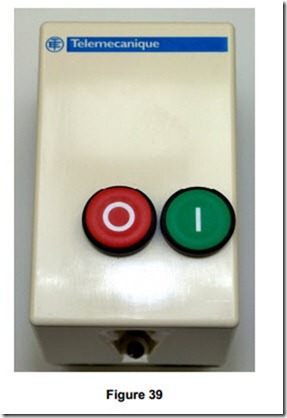Motor Starter
The term motor starter is used to describe a device which is used to:
· Safely apply power to an electric motor to cause it to start up and run
· Protect a motor from the effects of overloading or single phasing
· Safely disconnect a motor from the supply to stop it
· Prevent the motor re-starting after a supply failure ( only where danger may exist )
· This is referred to as No Volt Protection.
The simplest form of motor starter for the induction motor is the Direct On Line starter. The DOL starter comprises a contactor and an overload protection relay. The contactor switches the supply to the motor. It is controlled by a start button and a stop button. The stop button is an integral part of the overload relay. An auxiliary contact on the contactor is used to maintain the supply to the contactor coil after the start button is released. If the supply to the contactor coil fails, the contactor is de-energised and the motor stops. The start button must be pressed to energise the contactor again. The overload relay monitors the current being taken by the motor. Figure 39 shows an enclosed starter.
